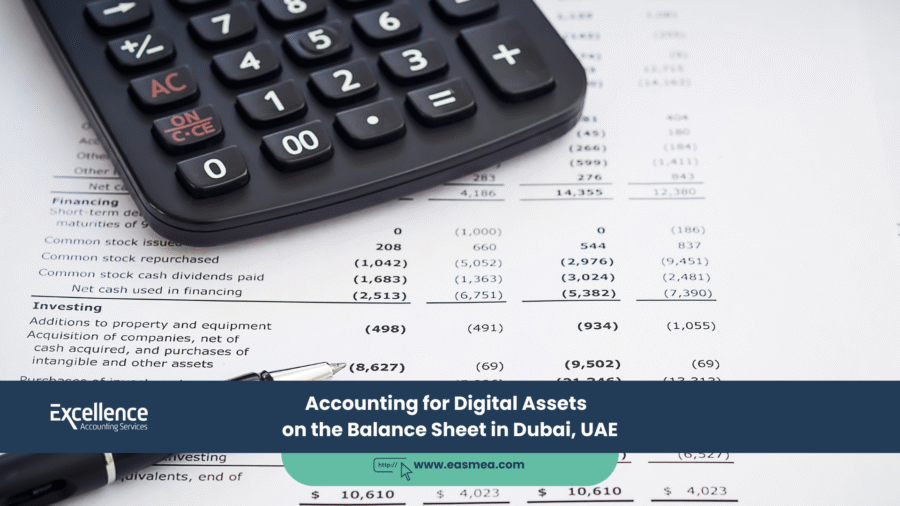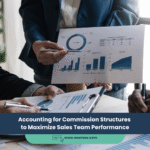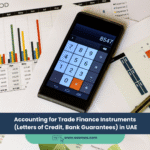Accounting for Digital Assets: Software, Domains & Databases on the Balance Sheet
In the modern economy, a company’s most valuable assets are often not the desks and chairs in its office, but the invisible lines of code, data, and digital properties that drive its operations and customer relationships. Digital assets—such as software licenses, proprietary databases, and premium domain names—are the engines of growth for countless businesses. Yet, their treatment on the financial statements remains a source of confusion for many.
How do you put a value on a piece of software or a customer database? When can you record these assets on your balance sheet, and when must their costs be expensed immediately? The answers lie in IAS 38 Intangible Assets, the international accounting standard that provides the framework for recognizing and measuring these non-physical assets. Applying this standard correctly is crucial for presenting a true and fair view of a company’s value and for making sound financial decisions.
This guide will demystify the accounting for key digital assets, explaining how to determine their cost, when they can be capitalized, and how they should be treated throughout their lifecycle on the balance sheet.
Key Takeaways
- Digital Assets are Intangible Assets: Under IFRS, software, domains, and databases are classified as intangible assets as they have no physical substance.
- Purchased vs. Internally Generated: The accounting treatment differs significantly. Purchased digital assets are generally capitalized, while most costs for internally generated assets (like brand value) are expensed.
- Capitalization Criteria: To be recognized on the balance sheet, an intangible asset must be identifiable, controllable by the company, and expected to generate future economic benefits.
- Amortization is Key: Capitalized digital assets with a finite useful life must be amortized (the equivalent of depreciation) over that life.
- Impairment Testing: All intangible assets must be regularly tested for impairment to ensure their carrying value on the balance sheet is not overstated.
The Golden Rule: IAS 38 and Intangible Assets
IAS 38 defines an intangible asset as an identifiable, non-monetary asset without physical substance. To be recognized on the balance sheet, an asset must meet this definition and it must be probable that future economic benefits will flow to the entity, and its cost can be measured reliably.
The most critical distinction under IAS 38 is between assets you buy and assets you create.
1. Accounting for Software
- Purchased Software Licenses: When you purchase a perpetual software license (e.g., a license for a major ERP system), the cost is capitalized as an intangible asset. This includes the purchase price and any costs directly attributable to preparing the asset for its intended use, such as installation and customization fees. The capitalized cost is then amortized over the license’s useful life.
- Software as a Service (SaaS): Subscriptions to cloud-based software (like Microsoft 365 or Salesforce) are not capitalized. These are treated as operating expenses and are recognized in the profit and loss statement as the service is consumed (i.e., monthly or annually).
- Internally Developed Software: This is more complex. Costs incurred during the “research” phase must be expensed. Costs incurred during the “development” phase can only be capitalized if strict criteria are met, including demonstrating technical feasibility and the intention and ability to complete and use or sell the software. This requires robust project tracking, a key part of our accounting system implementation services.
2. Accounting for Domain Names
- Purchased Domain Names: If you purchase a premium domain name from a third party for a significant cost, this cost is capitalized as an intangible asset.
- Useful Life: Domain names can be considered to have an indefinite useful life if they are renewed regularly and are central to the company’s identity. In this case, they are not amortized but must be tested for impairment annually. If their useful life is deemed finite, they are amortized.
- Annual Registration Fees: Standard annual renewal fees for domain names are treated as an operating expense.
3. Accounting for Databases
- Purchased Databases: A customer list or database acquired as part of a business acquisition is recognized as an intangible asset on the balance sheet at its fair value. It is then amortized over its estimated useful life. A professional business valuation is needed to determine this fair value.
- Internally Generated Databases: The costs of building a customer database internally (e.g., marketing costs to acquire customer data, salaries of data entry staff) must be expensed as they are incurred. IAS 38 specifically prohibits the capitalization of internally generated customer lists.
The balance sheet should reflect a company’s valuable resources. Correctly accounting for digital assets ensures that the significant investments made in technology and data are properly represented.
What Excellence Accounting Services (EAS) Can Offer
The valuation and accounting for digital assets is a specialized field. Excellence Accounting Services provides the expertise needed to ensure your balance sheet is accurate and compliant.
- Intangible Asset Advisory: We provide clear guidance on applying IAS 38, helping you distinguish between capitalizable costs and expenses for your software, databases, and other digital assets.
- Valuation Services: In a business acquisition, we work with valuation experts to determine the fair value of acquired digital assets for purchase price allocation (PPA) purposes.
- Impairment Testing: We can perform the annual impairment tests required for your intangible assets, ensuring their carrying value is not overstated. This is a key part of our due diligence and audit support.
- Fixed Asset Register Management: We help you create and maintain a comprehensive fixed asset register that includes your intangible assets, tracking their cost, useful life, and amortization schedule.
- Tax Implications: Our UAE corporate tax team can advise on the tax treatment of amortization and impairment losses, ensuring your tax filings are accurate.
Frequently Asked Questions (FAQs)
Amortization is the systematic allocation of the cost of an intangible asset over its useful life. It is the equivalent of depreciation for tangible assets. The amortization expense is recorded in the profit and loss statement each period.
The useful life is the period over which the asset is expected to be available for use by the company. For a software license, this could be the contract term or the period until you expect it to be replaced by a newer version. It requires management judgment.
An impairment test is a process to determine if an asset’s carrying value on the balance sheet is higher than its “recoverable amount” (the higher of its fair value less costs to sell, and its value in use). If it is, an impairment loss must be recognized to write the asset’s value down.
Under IAS 38, the revaluation model can be used for intangible assets, but only if there is an active market for that asset (like a stock exchange). As there is no active market for unique domain names, they are generally carried at cost less any impairment losses and cannot be revalued upwards.
No. The costs of advertising and promotion to build brands and customer relationships must be expensed as incurred under IFRS.
Capitalizing a cost means recording it as an asset on the balance sheet. The cost is then gradually charged to the P&L over time through amortization. Expensing a cost means charging the full amount to the P&L in the period it is incurred.
Similar to internally developed software. The initial planning and “research” phase costs are expensed. The costs during the application and infrastructure development phase can often be capitalized. Costs related to content creation are typically expensed unless they meet specific criteria.
Yes. A brand name acquired as part of a business combination is recognized as an intangible asset at its fair value on the date of acquisition. However, the costs of developing your *own* brand name internally must be expensed.
IAS 38 prohibits this because it is considered too difficult to reliably measure the cost of creating these assets separately from the cost of developing the business as a whole.
No. Amortization is a non-cash expense, just like depreciation. It reduces your accounting profit but has no direct impact on your cash balance. It is added back to net income when preparing the cash flow statement.
Conclusion: Valuing the Invisible
In an economy increasingly driven by data and technology, a company’s digital assets are central to its ability to compete and create value. Understanding the nuanced rules of accounting for these intangible assets is no longer a niche specialty but a core competency for modern finance teams. By correctly applying the principles of IAS 38, businesses can ensure their balance sheet provides a true and fair representation of the valuable resources at their command, leading to better decision-making and greater stakeholder confidence.
Reflect Your True Value.
Let Excellence Accounting Services guide you through the complexities of accounting for intangible assets, from capitalization to impairment.




